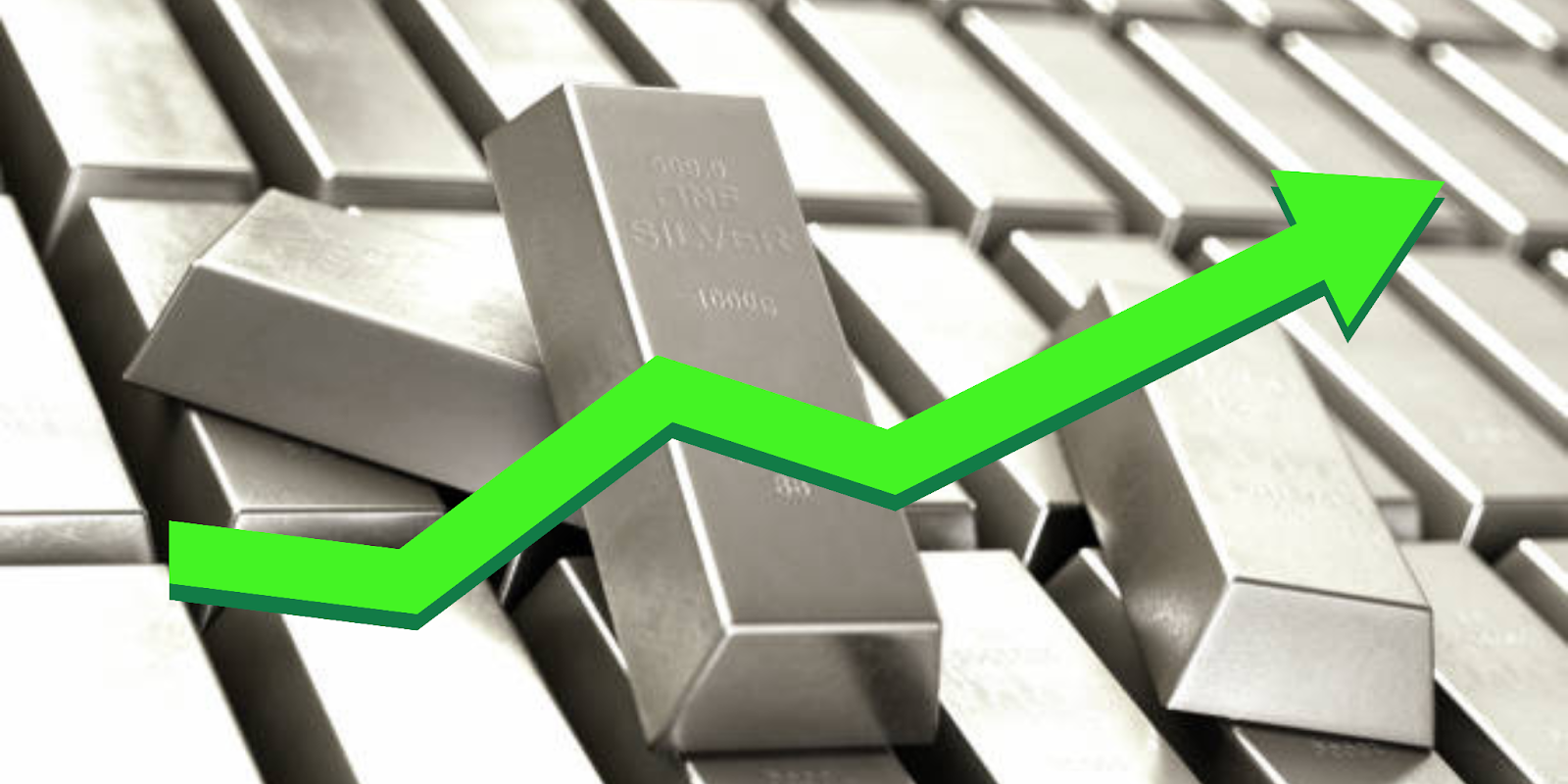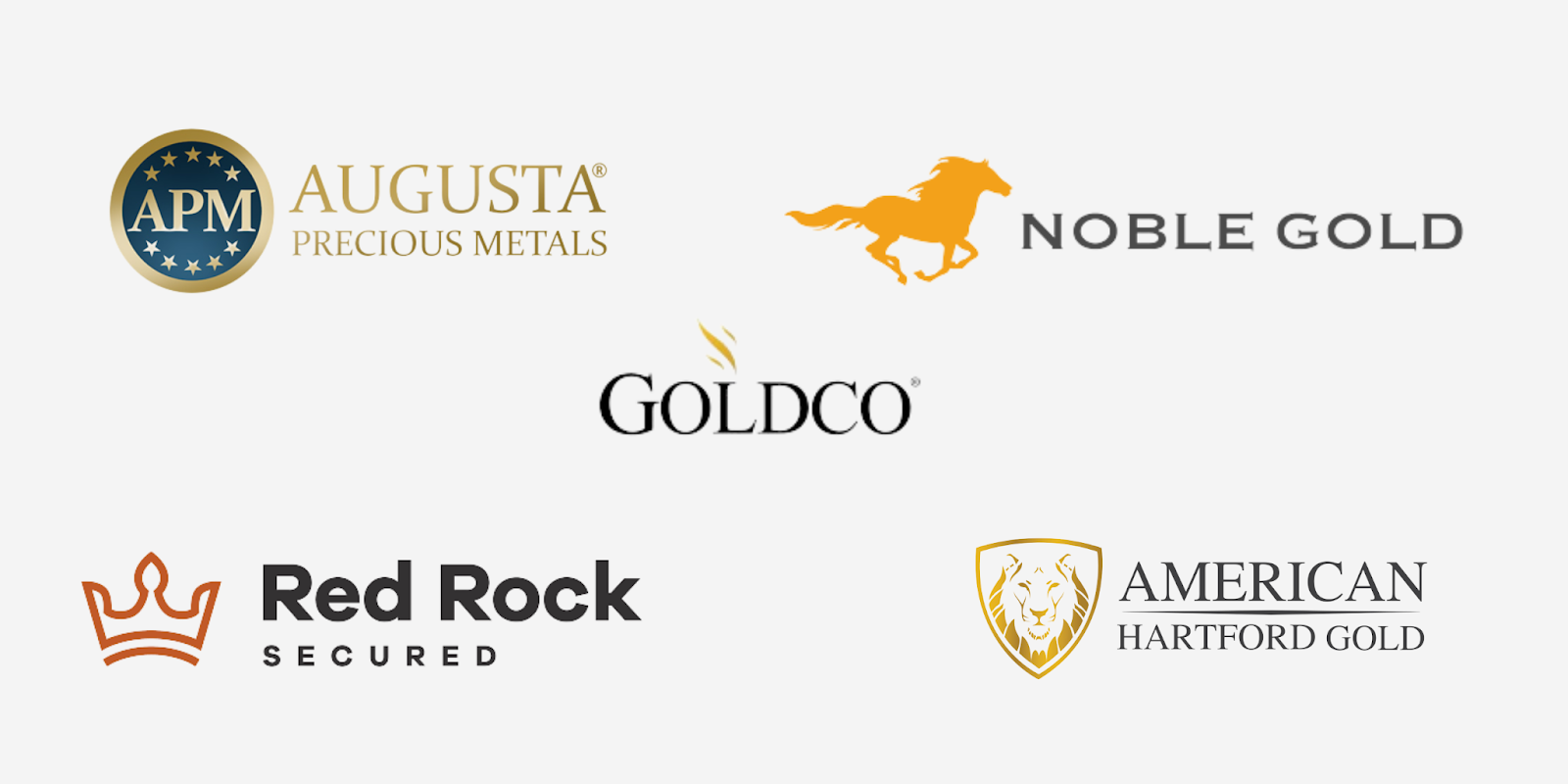A silver IRA is a type of individual retirement account that allows you to invest in precious metals—in this case, silver. Adding it to your investment portfolio offers various benefits such as diversification, tax benefits, and growth potential, which can be a valuable asset to your retirement strategy.
Like gold, investing in silver comes with several risks that you should be aware of, such as price volatility, fees, risks, and market dependency—which is a bit challenging if you don’t monitor your holdings regularly and are too occupied with your other investments.
Overall, adding a silver IRA may be best for your portfolio if you want a tangible asset that provides long-term growth even during vulnerable economic times.
If you want to diversify your investments even further, you should look into investing in a gold IRA. Gold has historically performed well in the long term regardless of market conditions providing a way to hedge against inflation.
If you’re looking for an investment to spice up your retirement portfolio, then a silver IRA might be for you. Like gold, Investing in precious metals like silver can be a great option to maximize the growth of your portfolio and protect your savings from the sudden increase in the cost of living.
In this post, we’ll explore how a silver IRA works, its advantages and disadvantages, how a silver IRA can help you achieve your retirement goals, and how to get started.

What Is A Silver IRA?
A silver IRA is an individual retirement account that allows you to invest in physical silver bullion and coins. Silver IRAs are self-directed, which means that you're responsible for choosing your investments and managing your account. You have to find a custodian who offers self-directed accounts to hold your assets, but you make the call regarding which products you’re going to invest in—which in this case, are silver investments.
Same as gold IRAs, investing your retirement funds in a silver IRA offers numerous benefits to young adults and people approaching retirement. These benefits include:
- Diversification: Silver can be an alternative investment for your portfolio if you’ve already invested in stocks, bonds, and real estate.
- Growth Potential: Investing in silver has the potential to increase its value in the long term since it’s used in renewable energy and is typically used more often than gold in industrial applications, driving demand for silver and increasing its price.
- Protection against inflation: Silver has only a moderate to weak positive correlation to paper assets like stocks and bonds, making it stable to protect you from inflation and market volatility.
Before creating a silver IRA, there are things you have to consider if you’d like to invest your retirement savings in this precious metal.
Traditional IRA Vs Silver IRA
A traditional IRA is an individual retirement account that allows you to invest in a broad range of assets, including stocks and bonds. You don’t have to pay taxes when you contribute to this account; however, you're required to pay taxes when you withdraw your money from it after turning 59 ½.
On the other hand, the silver IRA works like a traditional IRA, but it focuses on investing your retirement savings in precious metals like silver instead. The tax benefits are the same as with the traditional IRA, where your contributions are tax-deductible now, but your withdrawals are taxed later on.
Moreover, you can decide which type of IRA you’re going to build your retirement portfolio with. These depend on factors such as your retirement goals, financial lifestyle, and risk tolerance.
Types Of Silver Allowed In A Silver IRA
When investing in a silver IRA, you must know what types of silver bullion are deemed eligible by the IRS. According to the IRS, the minimum level of fineness of a silver bar or coin should be 0.999 or 99.9% pure silver to be considered IRS-approved.
Some of the IRS-approved coins and bullion include:
- American Silver Eagle Coins
- Canadian Silver Maple Leaf Coins
- Austrian Silver Philharmonic Coins
- Morgan Silver Dollars (NGC MS68)
- Johnson Matthey Silver Bars
- PAMP Suisse Silver Bars
How Does The Silver IRA Work?
A silver IRA works like any other IRA—only it’s self-directed. This means you get to make all your investment decisions—including the particular silver bullion you invest in—to diversify your retirement portfolio. Other than that, the process is the same as managing a gold IRA. This can be simplified in 5 steps:
- You open a silver IRA with a reputable custodian.
- You deposit funds, and the custodian purchases your chosen silver coins or bullion for you.
- The custodian stores your silver in a secured depository or facility.
- You keep track of your investments by logging into your IRA account.
- When you retire, you make withdrawals by selling off your silver.
You should note that not all custodians offer silver IRAs, so it’s important to do your research or speak to your financial advisors for any company that trades silver.
Silver IRA Eligibility Requirements
There are no specific requirements when you open a silver IRA. Anyone who owns a traditional IRA is also eligible to own a silver IRA. However, you must have earned income that equals or exceeds your investment contribution. These may include your salaries, tips, wages, or other taxable employee compensation.
Silver IRA Contributions
The annual contributions to your silver IRA has the same limits as traditional or Roth IRAs:
- $6,000 per year if you’re under 50.
- $7,000 if you’re 50 or older.
Take note that the contribution may change in the future to keep up with inflation. They’re also limited by law so that employees with high salaries won’t benefit more from the tax benefits than the employees with average income.
Silver IRA Distributions
The rules behind distributions are also the same as for your typical IRA. Only when you turn 59 ½ years old can you start taking distributions from your silver IRA account. But if you want to keep your investments growing for longer, the IRS requires you to start taking Required Minimum Distribution (RMD) when you turn 72.
Your first RMD must be withdrawn by April 1st, the year you turn 72, and the second RMD must be withdrawn by December 31st of the same year. After you turn 73, you’ll need to start taking your distributions annually to avoid penalties.
6 Steps To Start Investing In A Silver IRA For Your Retirement
Here are some steps to invest your retirement savings in a gold IRA account.
#1 Choose A Reputable Self-Directed IRA Custodian
Before investing in silver, you must look for a reputable custodian specializing in silver investments. Unlike a traditional IRA, you should choose a self-directed IRA custodian since it enables you to invest in precious metals like silver.
If you’re having difficulty looking for the right custodian, you can base your decision on reviews from Better Business Bureau (BBB), asking for recommendations from other investors, or simply consulting with your financial advisor.
#2 Select A Precious Metal Dealer
IRA custodians can sometimes also act as brokers to purchase your precious metals for your silver IRA account. However, if your chosen custodian can only store your assets, you must find a dealer for your purchases.
#3 Open A Silver IRA Account
Once you’ve found an IRA custodian and a dealer, you’ll need to open your Silver IRA account. Your custodian will help you open your account with your personal information, such as name, address, and Social Security Number (SSN).
#4 Fund Your Silver IRA Account
You must now fund your account by making contributions to your new Silver IRA. However, if you already have a normal retirement account, you can also invest your retirement savings in silver by transferring your funds from your existing IRA to your Silver IRA.
#5 Purchase Your High-Quality Silver Products
After your custodian has transferred your funds, you're now able to purchase silver coins and bullion through your Silver IRA company. You must make sure that your silver holdings meet the IRS’s minimum level of purity, which is 99.9%.
#6 Store Your Silver In A Depository
Once the transaction is completed, your custodian will handle the logistics of storing your silver in a secured depository—such as the Delaware Depository or Brink’s. Your custodian can recommend a depository, but you can choose your own if you have a better option in mind. Just make sure it’s IRS-approved.
Remember that you must check your investments regularly since the value of silver may change from time to time depending on market demand and supply.
How To Convert Your Retirement Plans Into A Silver IRA
As mentioned before, you can start a silver IRA from scratch or convert a traditional IRA or another retirement plan into a silver IRA. In the latter case more common case, just follow the steps below to diversify your retirement portfolio with silver:
- Open a self-directed IRA account with a reputable custodian that allows you to invest in silver.
- You can transfer your existing IRA funds or roll over your 401(k) or another eligible retirement plan into this account. This rollover process can be done in two ways:
- It can be handled by your custodian working with the financial institution where you have your current IRA. This process is done directly (direct IRA rollover) and won’t incur early withdrawal penalty fees from the IRS.
- You can withdraw from your normal IRA and use the funds to buy the silver coins or bullion yourself, which you then deposit into your Silver IRA, doing the process indirectly.
- Choose a reputable silver dealer and an IRS-approved depository to buy and store your silver coins or bars. You can consult with your IRA custodian or a silver IRA specialist for guidance and recommendations.
- In direct rollovers, your custodian will already have the funds to make the purchase. Many precious metal IRA companies already work with specific custodians and approved depositories making the process easier.
- In this case of an indirect rollover, you’ll have the money in your account and you’ll have to buy the silver yourself within 60 days of receiving the funds, or you’ll have to pay the IRS an early withdrawal fee.
- Complete the necessary paperwork and choose the silver coins or bullion you want to invest in. Make sure they’re at least 0.999 fine so the silver is IRA-eligible.
- Fund your silver purchase with your IRA account. Your silver dealer will ship your silver to the depository, where it will be held securely until you reach retirement age or decide to sell it.
When you convert to a silver IRA, there might be fees and costs to consider, so it’s best to talk to your financial adviser or accountant to know all the details before you decide to invest in silver.
5 Best Silver IRA Companies You Might Want To Invest With

If you’re still looking for the best Silver IRA companies to invest your retirement funds in but are quite intimidated to analyze its features one by one, this list’s for you! Here are our 5 best silver IRA companies in the United States, along with their unique features for your specific needs.
| Best For | Features | |
| Augusta Precious Metals | Best overall silver IRA company | Has a 24/7 live customer chat support. Full access to educational resources and to a skilled Harvard-educated analytics team. |
| Goldco | Best for storage options | Offers segregated and non-segregated storage options. Has a Goldco Buyback Guarantee to purchase your silver coins at the highest price. |
| American Hartford Gold | Best for excellent customer service | Free delivery on direct purchases.Hassle-free buyback program when you sell precious metals. |
| Red Rock Secured | Best for its Price Protection Plan | Free gold and silver guide Offers a Price Protection Plan to pay you back for the losses you get from silver dropping in price |
| Noble Gold | Best for smaller accounts or beginner investors | Low minimum investment of $2,000 – $5,000 Free educational materials to potential investors |
Special Fees To Consider In A Silver IRA Account
When investing in a silver IRA, you must have a firm understanding of the costs or fees it comes with. Thus, we outlined some of the usual fees you’ll be dealing with in your investment.
- Custodian fees: After you have chosen a reputable custodian, it’s going to charge you with some fees to keep it safe and running. These fees are usually initial set-up fee, annual fees, or shipping fees.
- Storage fees: As a silver IRA investor, you're required to pay for a storage fee to keep your silver in an IRS-approved depository. You can choose whether you want it to be stored with other people’s precious metals (non-segregated) or be separated on your own (segregated). The cost may range between $100 – $150 depending on the amount of silver you own or storage facility.
- Markup or commission fees: When you buy silver coins or bars, you need to expect that you're paying higher than its actual selling price. Brokers or dealers charge a certain amount of markup or commission fee to gain profit. Thus, it’s better to shop around and compare prices to get bithe best deal.
- Transaction fees: Silver IRA custodians may charge a transaction fee when you buy or sell silver within your account. These fees vary depending on your custodian.
- Wire transfer fees: If you pay for your silver using wire transfers, you will pay a wire transfer fee. Its cost can be as low as $25 per transaction, depending on the custodian
Moreover, it’s still important to check and compare every other custodian since it has different fee structures regarding its services. You can also consult with your financial advisor so you would know if you can handle the cost of investing in a silver IRA.
Pros Of Silver IRA Investing
#1 Diversification
Adding silver to your retirement portfolio is a great way to diversify your assets. Doing so reduces your overall risk, unlike paper assets such as stocks and bonds which are vulnerable to company bankruptcy.
#2 Tax Benefits
A silver IRA offers a tax advantage like tax-deferred growth—which allows you to save more money for retirement without paying taxes on your withdrawals.
#3 Protection Against Inflation
Just like a Gold IRA, investing in a Silver IRA can be leveraged in times of inflation. Since its value tends to rise when the value of the dollar weakens, this can be a good hedge against inflation.
#4 Growth Potential
Although the value of silver can be volatile, it still has the potential to grow in the long run. In the electronics, solar energy, and medical equipment industries, the demand for silver tends to increase. With this, the price of silver increases which can lead to the potential growth of your investment portfolio.
#5 Increased Value Due To Limited Supply
Precious metals like silver and gold have been historically used as a tangible store of value. This makes them great for storing long-term wealth, as their value tends to increase over time. Precious metals are rare and, therefore, in limited supply. We usually need to mine every ounce of silver we need, and that mining gets harder as mines are depleted. This, along with increased demand from different tech industries, makes the value of silver increase over time.
Cons Of Silver IRA Investing
#1 Price Volatility
The same as the price of gold, the value of silver is highly volatile. Silver may be used widely in various industries, but its store of value is less than gold, which can make its value unstable, causing high volatility.
#2 Storage And Insurance Fees
Storage fees are something unique to gold IRAs, i.e., something normal IRAs don’t charge since they don’t have to allocate space and resources to watch over your investments in stocks and bonds. This leads to additional costs since you’re required to pay for safe storage facilities and insurance.
#3 Market Dependency
As mentioned previously, the value of silver depends on its demand and supply in the market. Its price can be affected by various factors like industrial demand and mining production—making it difficult to monitor your investments constantly in order to prevent any losses. Furthermore, its relationship with many industries makes its value become positively correlated to those industries’ performance in the stock market. So, when the stock market performs poorly, the price of silver tends to decline, however slightly.
This isn’t the case with gold, for example, which shows a negative correlation, i.e. its price increases when stocks fall.
How To Track The Performance Of Your Silver IRA
Once you have purchased and stored your silver IRA in an IRS-approved depository (like Delaware Depository, you can now monitor your investment to see how well it is performing. One way to track its performance is by logging into your IRA account online. When you’re there, you should be able to see your account balance, the value of your silver holdings, transactions, and fees that are made within your account.
Overall, you may have to review or check your silver IRA’s performance regularly since there are constant changes in the market that can affect the value of silver—which can pose a risk to your retirement portfolio.
In Summary
Whether you’re an experienced investor or a beginner to the investment world, funding your retirement savings to a silver IRA is one way to expand your portfolio's growth. A Silver IRA offers numerous benefits, including tax benefits, diversification, and growth potential since it’s been used as a form of money and store of value.
However, like other IRAs, there are risks that you should know about, and those are price volatility, fees, and market dependency due to supply and demand. Thus, it’s important to do a bit of research to ensure that your silver investments are profitable in the long term.
If you want to diversify your investments even further, you should look into investing in a gold IRA. Gold has historically performed well in the long term regardless of market conditions providing a way to hedge against inflation.
Silver IRA FAQs
Is a silver IRA worth it?
Yes, a silver IRA is worth it, especially if you want to diversify your retirement portfolio other than investing in stocks and bonds. It also offers 4 other benefits: growth potential, a hedge against inflation, tax benefits, and long-term wealth. Investing in silver can also give you peace of mind and security since it has the potential to increase its value for your retirement.
Is a silver IRA tax-free?
No, a silver IRA is not tax-free. Although you may not pay any taxes when you contribute to your silver IRA, you're still going to pay taxes when you withdraw in your retirement.
Is a silver IRA a good investment?
Yes, a silver IRA can be a good investment. Silver IRA – like gold IRA – has historically held its store of value when there are market crashes and inflation. It can also be used as an alternative investment to provide diversification for your retirement portfolio—reducing your overall risk from placing all your savings in one asset.
What is the safest way to invest in silver?
The safest way to invest in silver is to purchase physical silver bullion or coins instead of ETFs and mutual funds. This is considered to be the safest way to invest in silver since you own the precious metal and have direct control of it, especially if it’s a silver IRA.
What makes silver IRA-eligible?
To ensure that silver is eligible for a Silver IRA, you must verify that its minimum level of purity is at least 99.9% or 0.999 in fineness. Some of the IRS-approved silver coins and bars include American Silver Eagle Coins, Canadian Silver Maple Leaf Coins, and PAMP Suisse Silver Bars.


